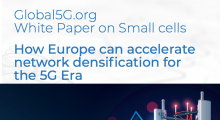5G-XCast: Object oriented broadcasting
With object-based broadcasting the programme is captured in the conventional way but stored as a set of its component parts, be they audio, video, captions or other material along with detailed metadata that describes how these should be assembled. These component parts are then delivered separately and rendered on the device in the form most suitable for a particular user and presented in a way that takes account of the capabilities of the device, the environment and the user’s preferences.
5G-Xcast is investigating and demonstrating a comprehensive solution that enables broadcast and multicast in 5G wireless communication.
In the aspect of Radio Access Network, the 5G air interface, logical architecture, Radio Access Technology protocols and Radio Resource Management supporting broadcast and multicast are specified to support two specific Point to Multipoint technologies: Mixed Mode and Terrestrial Broadcast. In the aspect of Core Network, architecture alternatives are devised and network convergence specified to enable efficient multicast and broadcast PDU session and content delivery.
These results provide a strong boost to standardization for 3GPP new releases on relevant topics and furthermore, to the significant activity of IMT-2020 KPI evaluation for ITU-R, in which 5G-Xcast is actively participating. Achievements in standardization in turn provide solid development ground for vertical industries. Multiple Proofs of Concept and trials have been carried out and the project results have been demonstrated in a number of major events such as EuCNC, IBC and MWC to show the 5G-Xcast excellence.
EuCNC 2019 Demo
“Forecaster5G: Object-based broadcasting”. Content is produced as a set of discrete media objects to be rendered by the end device. Common objects are transmitted using the Dynamic Adaptive Streaming over IP Multicast (DASM) system while personalised content is received via unicast. Partners: British Broadcasting Corporation (BBC), 5G Innovation Centre at the University of Surrey.
In terms of 5G functionalities, this use-case experiment investigates:
- eMBMS (enhanced multimedia broadast multicast service)
Vertical Partners involved: BBC, LiveU
Also involved: BT, University of Surrey
Other partners: Universitat Politècnica de València - UPV (Coordinator), British Broadcasting Corporation (BBC), Broadpeak, BundlesLab Kft, Expway, Fairspectrum Oy, Institut für Rundfunktechnik GmbH, Nokia Solutions and Networks Oy, Nokia Solutions and Networks Management International GmbH, Nomor Research, One2Many, Samsung Electronics (UK) Limited, Telecom Italia Spa (TIM), Turku University of Applied Sciences (TUAS), European Broadcasting Union/Union Européenne de Radio Télévision (EBU).



